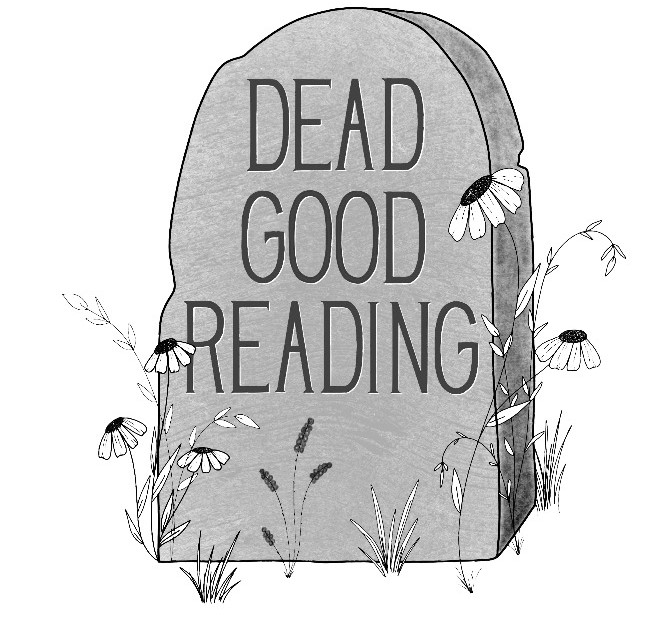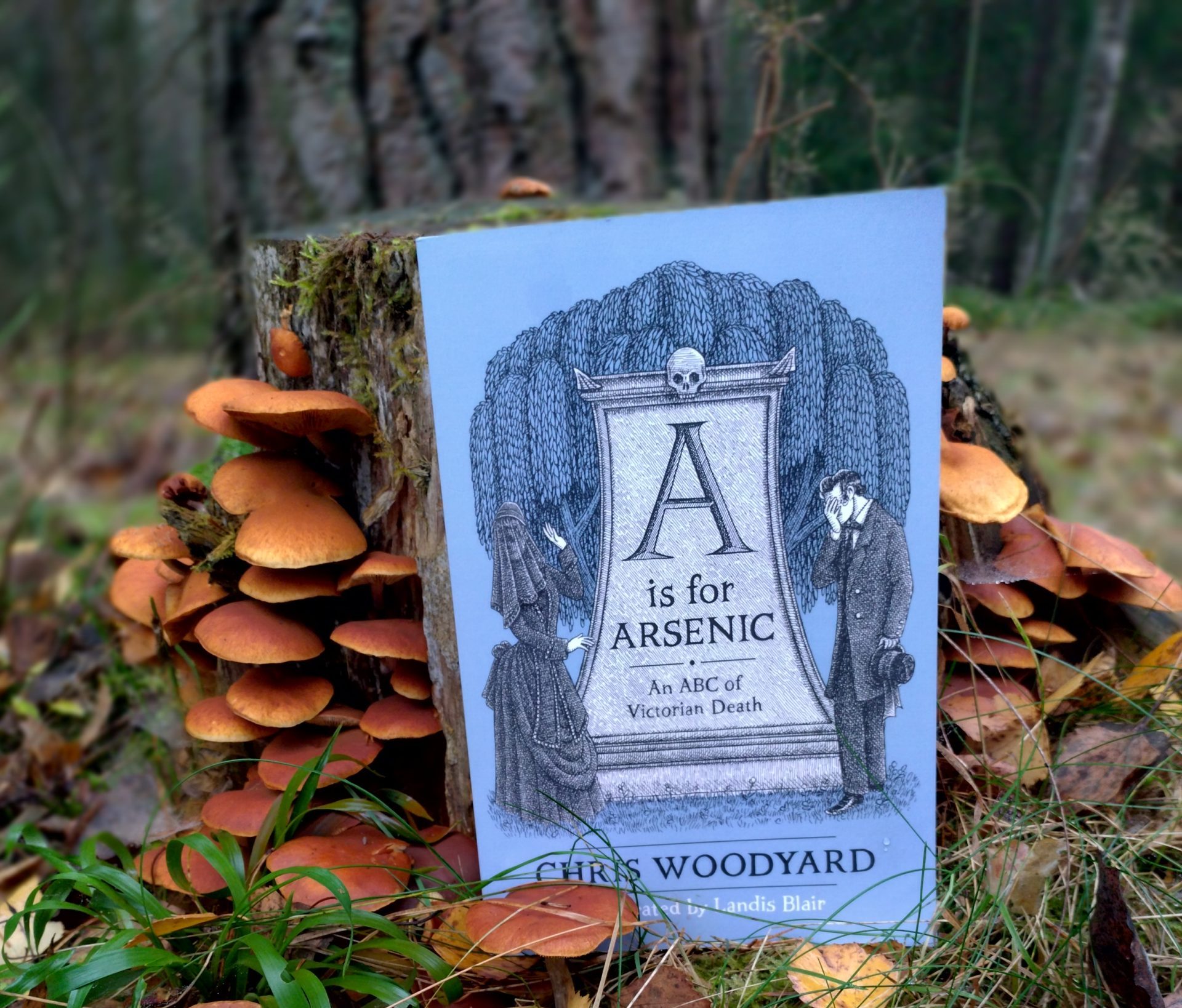Chris Woodyard very kindly sent a copy of the book A is for Arsenic: an ABC for Victorian Death, a book that is perfect to read during the spooky month, when the boundaries between the dead and the living are thinner. The book is not really ‘spooky’ at all, unless you are afraid of Victorian Mourning Customs which, to be fair, are sometimes a bit spooky.
As the title alludes to, A is for Arsenic sheds light on these customs, aided by the alphabet. A is for Arsenic, B is for Bier, C is for Crape, and we finish, like multi-vitamins, with Z is for Zinc. There are 26 short chapters that each explain an element that shaped Victorian Death customs, followed by a chronological list of mourning customs and a glossary that highlights some of the main terms.
I am unable to read “bier” with my English brain, and keep reading it as the Dutch word for beer, which I suppose would be apt as well. But as we learn from Woodyard:
B is for Bier
Owned by the Parish
A modest death trolley
Nothing too Garish
(Woodyard, 2024 page 14).
Every chapter starts with a short poem like this. Each letter is linked to a deathy-word and the concept is explained by Woodyard, and its use underscored through newspaper articles, etiquette handbooks and puff pieces. Obviously, some of the letters are more difficult to attach to a concept but I think Woodyard did brilliantly, and luckily English has more words that start with “Q” than Dutch. (Q is for Queen Victoria, if you were wondering).
I love reading these types of books as they often help explain terms that I only know from (American) popular culture. In this case, I went on a little internet side-quest when Woodyard used “puffing” as a verb. I have heard the term “puff piece” in television series (for example in one of my all-time favourite shows Gilmore Girls) but I had never thought about the origin, or indeed the actual meaning of the phrase. According to the Cambridge Dictionary a puff piece is “a piece of writing or speech that praises someone or something too much”. A is for Arsenic is filled with puff pieces, which praise the various objects and rituals concerned with Victorian burial and mourning practices.
A is for Arsenic shows how mourning practices are always influenced by popular culture of the time. In contemporary times, television and film are often blamed for the impact they have on the perception of death and dying, and how they blur the lines between ‘real’ and ‘imagined’ death. It is suggested that they are increasingly the main source of information on what are considered appropriate burial and mourning practices. But as Woodyard shows, this is not a new phenomenon. In G is for Gates Ajar, we learn abou the so-called “Gates Ajar” flower arrangement, one of the most popular funeral flower arrangements in the nineteenth and early twentieth century. This design comes from a novel written by Elizabeth Stuart Phelps and became so popular that it features in poems, songs and was installed in public parks. Author Elizabeth Stuart Phelps was both amused and appalled that her description had become such a rage.
It would go amiss if I did not mention the wonderful illustrations provided by illustrator Landis Blair. Each chapter is decorated with a wonderful gothic image, that really sets the scene for the subject to be discussed and I hope some of them are available as postcards or prints.
This book would be a great holiday present for every death-enthusiast, but is accessible for a wider audience and a book I’ll return to if I need to look up some Victorian Death facts.
To learn more about Chris Woodyard, visit their website.


Leave a Reply